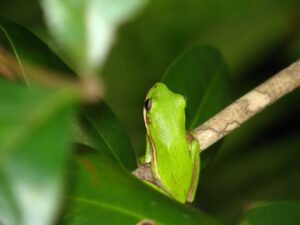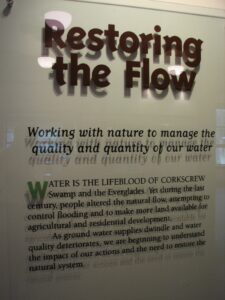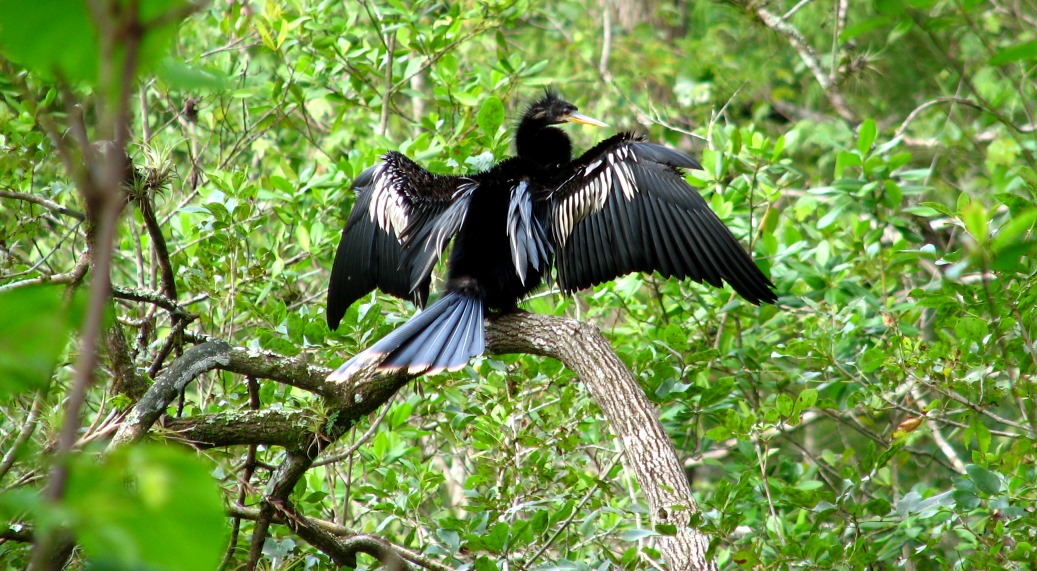In January of 2021, Audubon’s Corkscrew Swamp Sanctuary in southwest Florida partnered with Big Cypress Basin to restore its wetland habitats. Corkscrew is one of my (Storm Cunningham) favorite parks in the world, having enjoyed it many times during my 15 years of living in the Tampa Bay area.
Corkscrew Swamp Sanctuary is a Ramsar Wetland of International Importance that was recognized in 2019 as a Wetland of Distinction by the Society of Wetland Scientists, has been an Audubon-protected site for more than 100 years.
 It covers 13,000 acres, including the world’s largest remaining, old-growth bald cypress forest. An estimated 100,000 visitors annually explore the Sanctuary’s 2.25 miles of boardwalk through ancient forest and marsh habitat.
It covers 13,000 acres, including the world’s largest remaining, old-growth bald cypress forest. An estimated 100,000 visitors annually explore the Sanctuary’s 2.25 miles of boardwalk through ancient forest and marsh habitat.
Through its Local Partnership Grant Program, Big Cypress Basin is providing $100,000 toward the multi-million dollar effort to restore ecologic function to wetland habitats within the Sanctuary that have been taken over by invasive plants.
“Partnerships like this are crucial for accomplishing the vision we have for Corkscrew Swamp,” said Sanctuary Director Lisa Korte, Ph.D.
“These grant funds will pay for us to restore an additional 200 acres and will bolster the financial support that we’ve already received from community donors and other supporters for this five-year project,” she added.
Big Cypress Basin prioritizes protecting wetland resources from overdrainage in the dry season as a balance to wet season efforts to quickly remove water standing water from roads and properties. The proposed woody vegetation management project at the Sanctuary will implement the next phase of a proven wetland restoration strategy.
 The goal of the restoration is to reduce the water used in the dry season by invasive, woody plants and return the marsh to the grassy vegetation that is more conducive to prescribed fire. By removing this nuisance, woody vegetation, the wetland areas will be restored to their natural condition and provide better habitat for native wildlife.
The goal of the restoration is to reduce the water used in the dry season by invasive, woody plants and return the marsh to the grassy vegetation that is more conducive to prescribed fire. By removing this nuisance, woody vegetation, the wetland areas will be restored to their natural condition and provide better habitat for native wildlife.
“Restoring these wetlands also protects portions of Golden Gate Estates and the Corkscrew Island Neighborhood surrounding Corkscrew Swamp Sanctuary by reducing the risk of catastrophic wildfire,” Korte continued.
The Sanctuary’s wetlands are a critical source of water flowing back into the aquifer, as well as water flowing to the Imperial and Cocohatchee Rivers that feed Estero Bay’s estuaries.
These estuaries connect with the Wiggins Pass Estuarine Area and Cocohatchee River System of northwest Collier County. In addition, the wetlands store water in the dry season, reducing the risk of wildfires.
All photos are by Storm Cunningham, and were taken in the Corkscrew Swamp Sanctuary.

